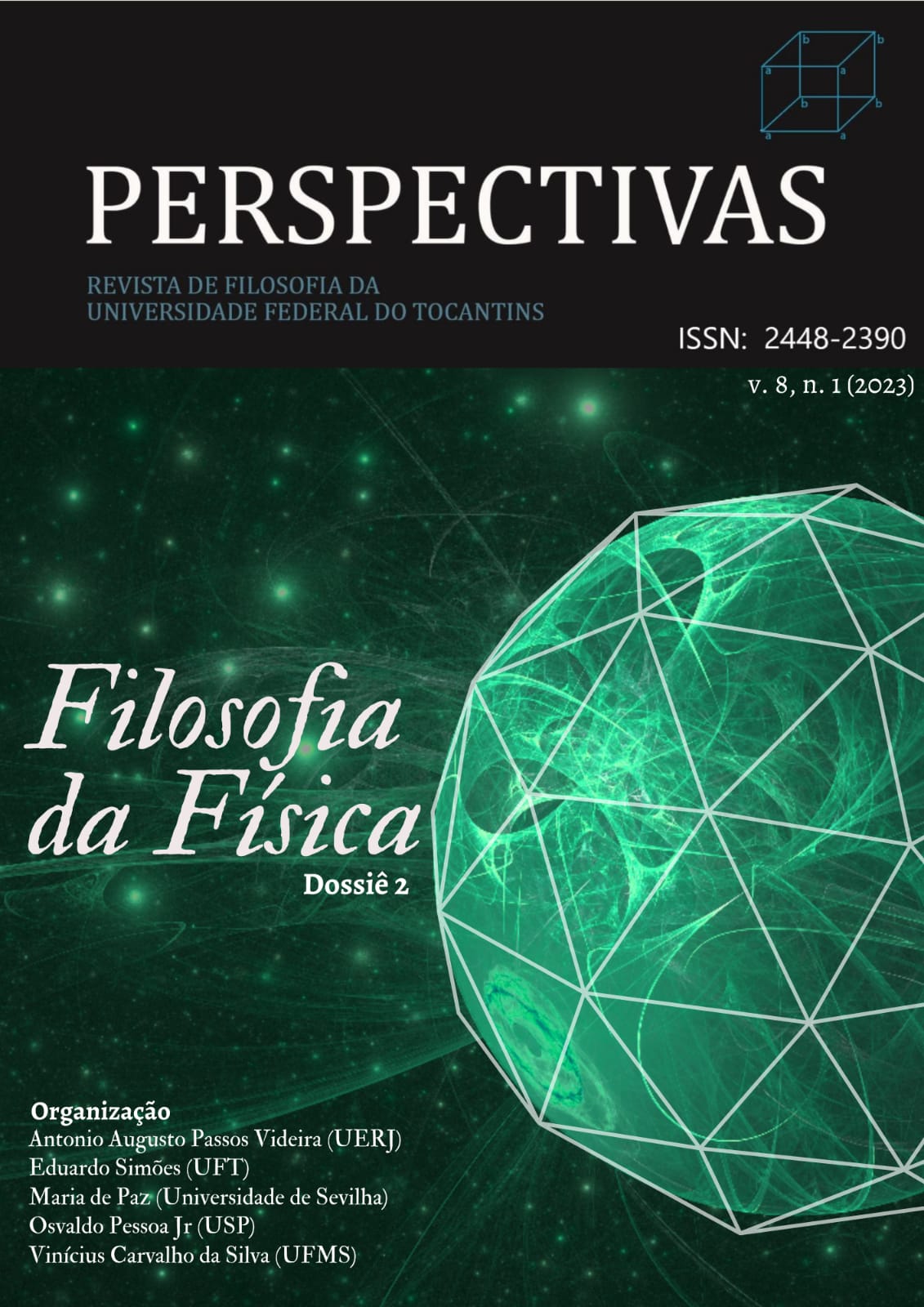Some reflections on the semantic approach, tarskian truth and structuralism
DOI:
https://doi.org/10.20873/rpv8n1-69Resumo
In the present paper, we return to one of the main theses we already defended concerning the role of the tarskian truth notion within the semantic approach (CARNIER, 2022). As it was argued, this truth notion proves to be insufficient to be applied to scientific theories as they are conceived by this approach, i.e., as extralinguistic entities, because it is a property of sentences and because the tarskian truth of a sentence doesn't necessarily mean the world is as it describes, which results in the fact that other truth conceptions more appropriate need to be articulated within the several members of the semanticist family, in order to characterize the relationship between theory and phenomenon. Our argument in this regard was based in a case study applied to constructive empiricism and quasi-realism, but in this paper we extend our analysis to structuralism, assuming and endorsing the position according to which this proposal may be considered a member of the semantic approach.
Referências
ADAMS, E. W. The foundations of rigid body mechanics and the derivation of its laws from those of particle
mechanics. In: HENKIN, L.; SUPPES, P.; TARSKI, A. (Eds.). The axiomatic method. Amsterdam: North
Holland, 1959, p. 250-265.
BALZER, W.; MOULINES, C. U.; SNEED, J. D. An architectonic for science: the structuralist program. Dordrecht:
D. Reidel, 1987.
BUENO, O. O empirismo construtivo: uma reformulação e defesa. Campinas: Coleção CLE, 1999.
BUENO, O. Quase-verdade: Seu significado e relevância, 2018. Available in: https://web.as.miami.edu/personal/obueno/Site/Online_Papers_files/QuaseVerdade_Signific%26Import.pdf
CARNAP, R. The methodological character of theoretical concepts. In: FEIGL, H.; SCRIVEN, M. Minnesota studies in the philosophy of science, Vol. I. Minneapolis: University of Minnesota Press, 1956, p. 38-76.
CARNIER, C. R. Algumas reflexões sobre a verdade tarskiana, a quase-verdade e a abordagem semântica. Cognitio: Revista de Filosofia, v. 23, n. 1, p. e56870, 2022.
CHANG, C. C.; KEISLER, H. J. Model theory, 3rd ed. Amsterdam: North-Holland, 1990.
DA COSTA, N. C. A.; FRENCH, S. Science and partial truth. Oxford: Oxford University Press, 2003.
DÍEZ, J. A.; LORENZANO, P. La concepción estructuralista en el contexto de la filosofia de la ciencia del siglo
XX. In: DÍEZ, J. A.; LORENZANO, P. (Eds.). Desarrollos actuales de la metateoria estructuralista: problemas y discuciones. Bernal: Universidad Nacional de Quilmes, 2002, p. 13-78.
KUHN, T. S. The copernican revolution: planetary astronomy in the development of western thought. Cambridge: Harvard University Press, 1957.
PUTNAM, H. What theories are not. In: NAGEL, E.; SUPPES, P.; TARSKI, A. (Eds.). Logic, Methodology and Philosophy of Science. Stanford: Stanford University Press, 1962, p. 240-251.
SNEED, J. D. The logical structure of mathematical physics, 2nd ed. Dordrecht: D. Reidel, 1979.
SUPPE, F. The Structure of Scientific Theories. Urbana/Illinois: University of Illinois Press, 1974.
SUPPE, F. The semantic conception of theories and scientific realism. Urbana/Illinois: University of Illinois
Press, 1989.
SUPPES, P. Representation and invariance of scientific structures. Stanford: CSLI Publications, 2002.
TARSKI, A. The semantic conception of truth and the foundations of semantics. In: Readings in philosophical
analysis. New York: Appleton-Century-Crofts, 1949, p. 52-84.
PERSPECTIVAS | VOL. 8, Nº 1, 2023, P. 296-311
Some reflections on the semantic approach, Tarskian truth and structuralism
DOI: 10.20873/rpv8n1-69
TARSKI, A.; VAUGHT, R. L. Arithmetical extensions or relational systems. Compositio Mathematica, v. 13, n. 2,
p. 81-102, 1957.
VAUGHT, R. L. Model theory before 1945. In: HENKIN et al. (eds.). Proceedings of the Tarski symposium. Providence: American Mathematical Society, 1974, p. 153-172.
Downloads
Publicado
Como Citar
Edição
Seção
Licença
Copyright (c) 2023 Rodolfo Cunha Carnier

Este trabalho está licenciado sob uma licença Creative Commons Attribution 4.0 International License.
Os autores que publicam com esta revista concordam com os seguintes termos:
1. Autores mantêm os direitos concedidos à revista ou o direito de primeira publicação com o trabalho licenciado à Atribuição de Licença Creative Commons Atribuição 4.0 Internacional (CC BY 4.0) que permite o compartilhamento de trabalhos com reconhecimento de autoria e publicação inical nesta revista.
2. Autores têm permissão para aceitar contratos, distribuição não exclusiva da versão do trabalho publicada nesta revista (por exemplo, publicarem em repositório institucional ou como capítulo de livro) com reconhecimento de autoria e de publicação inicial nesta revista.
3. Autores têm permissão e são estimulados a publicar e distribuir o seu trabalho on-line (por exemplo, em repositório institucional ou em sua página pessoal) com as devidas referências à revista.





















